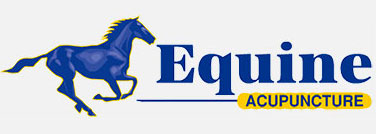Dysafferentation and Meridian Imbalance Part 2 (Meridian Imbalance)
To me as an equine acupuncturist I see the eastern concept of the meridian imbalance as it applies to sports medicine analogous to the western terminology of dysafferentation, it’s just the explanation for how the two concepts work is different. Traditional Chinese Medicine is a fascinating form or medicine, it has so far offered many insights into the western world which has helped to improve knowledge all round. But what is the point of understanding the problem in western terms and then further understanding the problem eastern terms, it seems like once you learn English in and English speaking country there is no need for you to ever learn another language is there. The advantage of learning and understanding meridians and TCM is the fantastic advantage that acupuncture can give to getting results needed to improve smooth coordinated movement.
TCM and it’s applications to meridians and acupuncture points provide a methodology to analyse the reciprocal relationship of multiple joints and movement. These meridians which course through the connecting acupuncture points run vertically from the digits to the chest and head. One of the advantages of understanding meridians is that they provide a framework for understanding this reciprocal relationship of the multiple joints involved in movement.
The term ’kinetic setting’ was explained to me by Mukaino Yoshito M.D in the book Sports Acupuncture, he explained it as ’joints that become fixed one after the other in movement’ and the smoother the kinetic setting the more energy efficient the movement. Kinetic setting applies to the joints which lie along the path of meridians along the body. If one joint along a meridian is in dysfunction then the kinetic setting is affected along the entire length of the meridian.
The Triple Heater and Pericardium meridian imbalance is probably the most common of any meridian imbalance. Together they allow for extension and flexion of the forelimbs, the Triple Heater meridian permits unilateral flexion of the neck and the Pericardium permits unilateral flexion of the chest. Let’s take a look at the meridians and the muscles and joints which they course through.
Pericardium Meridian
- Courses through the lateral chest, medial elbow, posterior knee and fetlock and the heal region of the foot.
- The main muscles the meridian courses through are the thoracic ventral serratus, caudal pectoral, subscapularis, middle carpal flexor and deep flexor muscles
- This allows the meridian control over the flexion of the forelimb and the unilateral flexion of the chest
Triple Heater Meridian
Courses through the lateral eye, ear, neck and shoulder as well as the anterior knee, fetlock and foot. The main muscles the meridian courses through are the splenius, scalene, longissimus capitis, cervical ventral serratus, deltoid, lateral triceps and the common and lateral digital extensor muscles. This allows the meridian control over the extension of the forelimb and the unilateral flexion of the neck.
An imbalance between the two meridians can initiate a wide range of symptoms along the path of the meridian or its opposite pair. For example and issue causing contracture in the pericardium meridian such as heal pain will cause excessive extension in the triple heater meridian and thus pain and dysfunction along the anterior forelimb and lateral neck. When any joint from the knee down is flexed, the triple heater meridian is further stretched and pain and discomfort is initiated, even if there isn’t any obvious symptoms in any of the associated joints. This reaction to flexion is enhanced in the colder months as the environment causes increased muscle contracture and thus enhanced meridian imbalance.
Common symptoms which can (and often do) develop from this imbalance include:
- Heal and feet pain and dysfunction
- Fetlock and suspensory pain and dysfunction
- Knee pain and dysfunction
- Elbow pain and dysfunction
- Shoulder pain and dysfunction
- Neck pain and dysfunction
- Chest pain and dysfunction
Through the knowledge of acupuncture points and meridians we have a working and usable insight for treatment of cases of dysafferentation. This can give us insights as to why symptoms in the forelimb can cause hypertonicity, pain and dysfunction in the neck and how to apply treatment to the cause of the dysafferentation with reliable success. Through the interconnections of the 12 meridians in the body, understanding of meridian imbalance can also give important insights into symptoms manifesting in other areas of the body.
I see acupuncture as a leading form of both diagnosis and therapy in cases of dysafferentation and pain in the body. Primarily acupuncture is used to balance these meridians and improve kinetic setting to restore smooth movement which reduces stress on any obvious symptoms present. An awareness of this meridian imbalance can also give us insight into how we can modify training programs, improve shoeing and apply veterinary
medicine to quicken and enhance treatment results.
If we go back to the example above, heal pain and bruising from bad conformation in the heal region. We can:
- Use acupuncture balance meridians associated with the symptom and promote proper afferent setting
- Work the horse on softer footing to reduce stress on the heals
- Give more support to the heals with specific shoes
- Use veterinary medicine to improve blood supply to the feet and help strengthen and improve the health of joints effected associated with the heal pain
This information can apply to all areas of the horse industry from thoroughbred and harness racing to competition and pleasure and can be of great benefit to them. It helps to show that acupuncture is a serious measure to enhance performance through better understanding of issues such as kinetic setting and have a valid use as a treatment for these issues.



